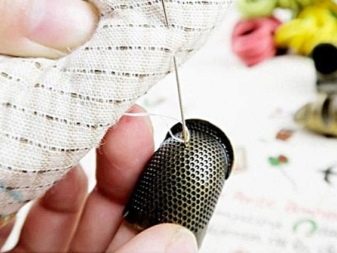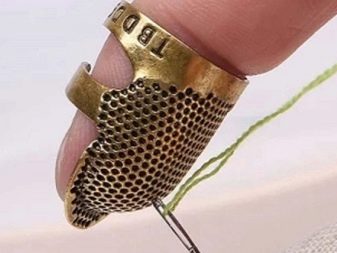What does a thimble look like and how to choose it?
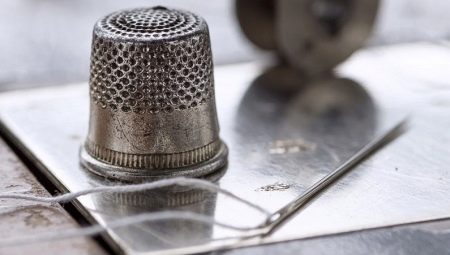
A device such as a thimble allows you to keep the delicate fingers of needlewomen intact while working with various materials. Today, they can be easily seen in sewing kits from both novice craftswomen and very experienced needlewomen.
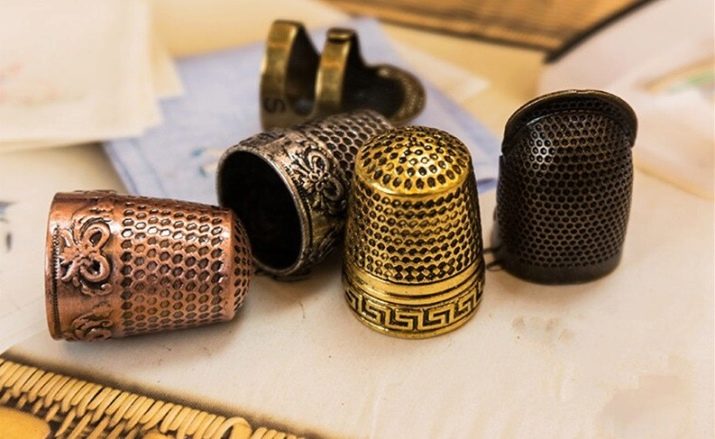
What it is?
The thimble looks like a small cap, which must be put on before embroidery or sewing on a finger in order to fully protect it from a possible prick from a working tool during manual work. This thing at one time was considered almost indispensable if it was necessary to stitch through thick types of fabrics or skin, when it was necessary to produce significant pressure in order to push a naughty needle through a dense material.
If you love sewing, you should train yourself to work with this device in a constant mode. This will help preserve your fingers and greatly speed up the sewing process. When you are forced to sew without a thimble, holding the needle with two fingers, at the slightest difficulty, you will have to help yourself with an unprotected third finger, pushing the needle from the side of the ear.
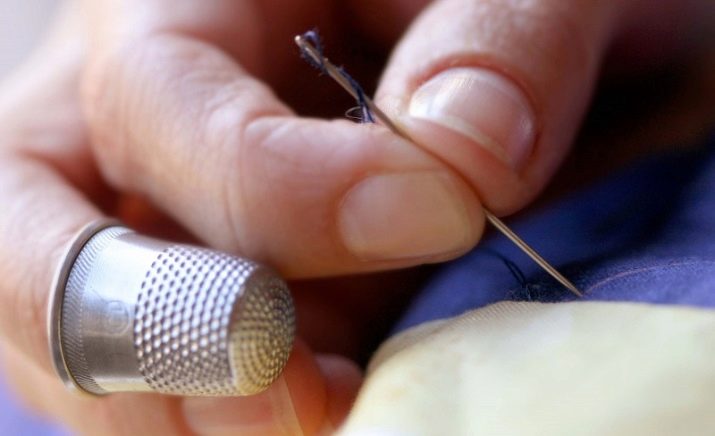
Of course, it is not sharp, but it can still seriously injure your finger. The use of different "improvised means" (table, teeth) to push the needle is the wrong choice, since this way you can injure or damage the table surface. Even if you usually work with light fabrics (like cambric, fine silk), and at the same time you think that you can do a great job at sewing without using a thimble,in fact, its presence on your fingers will help speed up your work.
All professional seamstresses are still actively using thimbles.
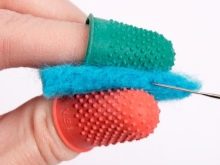
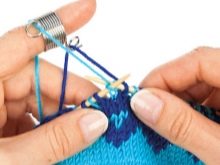

History of appearance
Initially, the thimble was created to help seamstresses in their difficult daily work, but the advent of sewing machines practically leveled this need. Yes, nowadays thimbles are also used in sewing, but in most cases they are already a unique souvenir, a gift. The fact that it is possible to protect fingers from needle sticks with a special device while sewing was realized in ancient times - in China and Egypt it was used about 2000 years ago. The meaning of the word "thimble" is "what is put on the finger." The first memories of ancient thimbles begin with a unique archaeological find near the city of Vladimir. The appearance of the product was not at all the same as we know it now.
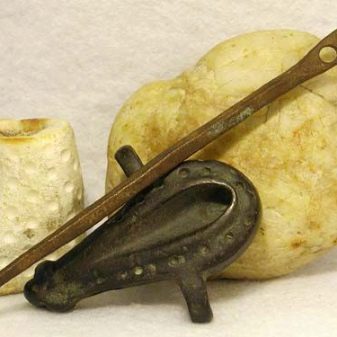

The first bronze thimble was found during excavations near the city of Tula - history tells us that metallurgical plants were built on this site in 1632. The first thimbles in Europe in the era of the Byzantine Empire were made with flat heads - this feature of the ancient production dates back to the 9th-10th centuries. As for the round, souvenir thimbles, Asian merchants brought them to the European continent much later. In 1824, the first factory patent for the production of metal thimbles was registered in Russia. Ornamental engraving was often seen on them - at least it meant the name of the manufacturer.


Species overview
Today, in specialized stores, you can make a selection of a large number of accessories that are designed to facilitate the work of any seamstress. There are 2 main types of modern thimbles: fully closed product, which will cover the entire finger with its area, and product type open top, it is especially welcomed by those craftswomen who have long nails and want to keep them. And also conditionally, these products can be classified into decorative type (for decoration, collectibles, souvenirs) and functional (for high-quality work with various types of fabrics).

By appointment
The product may have a special edging in its structure, designed to reduce the likelihood of slipping. The accessory differs from other products of a similar type with a ribbed surface. It will greatly facilitate the master's work with sliding materials - silk, satin, raincoat fabric.
- Adhesive accessory... This product is available in stainless steel and features a range of adhesive stickers. Perfect for patchwork sewing.
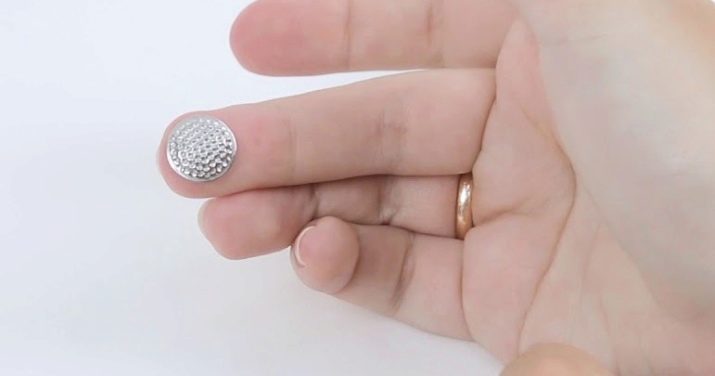
- For quilting technique. Equipped with not only a specially provided anti-slip edging, but also an adjustable mechanism for full-fledged sewing.
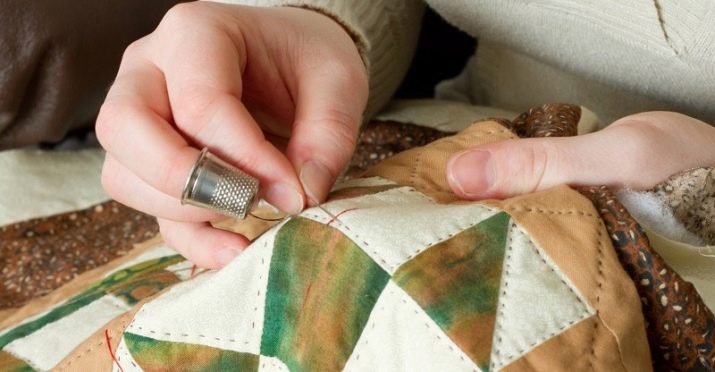
- For the felting technique (when felting wool)... The surface of the product is characterized by a pimpled structure, which is very convenient when working with the smallest details. Thanks to this surface of the thimble, the needles will also not slip.
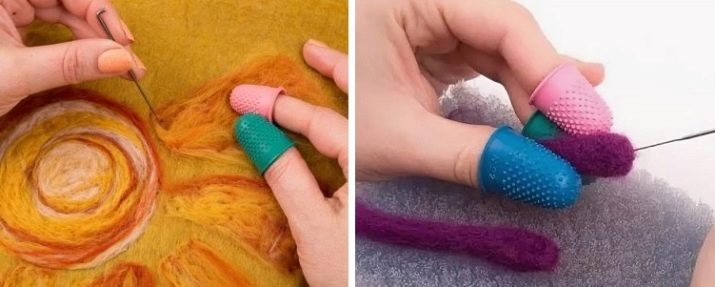
- For knitting... The appearance of the jacquard fixture resembles a detail from a well-known construction set for children. On the surface of the thimble there are protruding elements that allow you to easily guide the threads of the yarn and successfully separate the threads of various shades among themselves.
An unusual model of this kind is most often used in order to knit complicated patterns with knitting needles, when the knitted product will turn over several times during knitting of the 1st row.
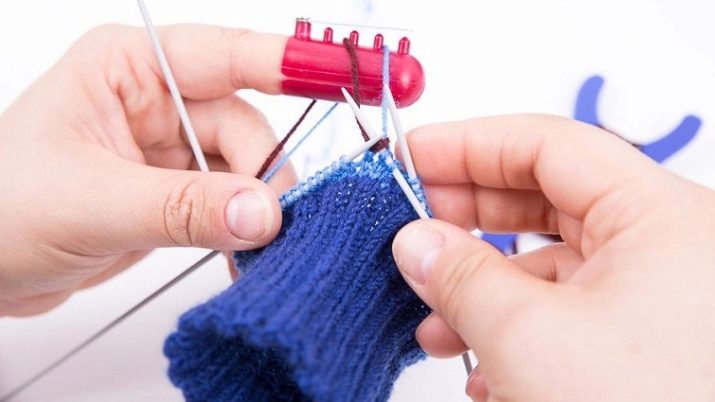
- Collectible... Many craftsmen today collect antique thimbles, some have quite good collections, the age of individual thimbles in them exceeds 100 years.
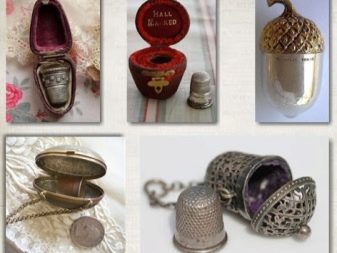
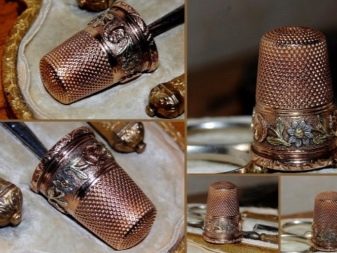
- Souvenir... Today, you can easily purchase decorative thimbles in many specialized stores as a stylish and original souvenir.
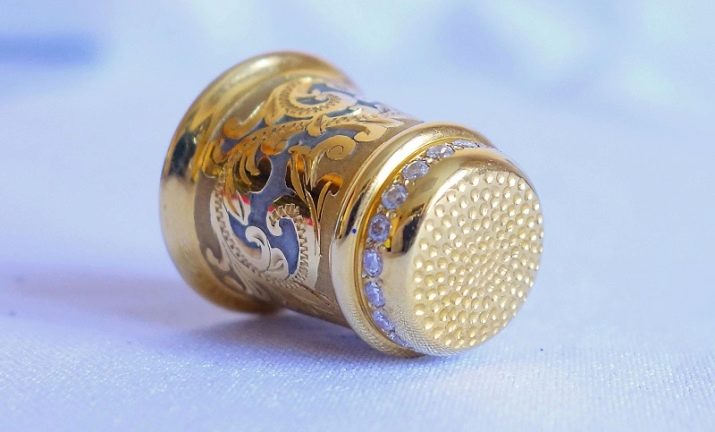
By model type
The models of finger protection accessories may vary.
- The simplest and well-known models look like a blank protective cap that is put on the active finger. Small indentations will be located on its surface, which are designed to prevent the needle from slipping during operation. Previously, such products were in almost every home.
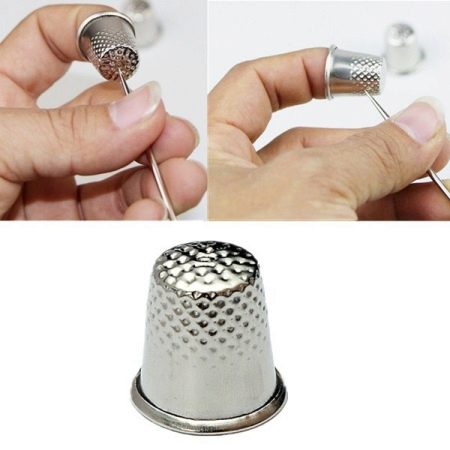
- The ergonomic model is designed to provide the highest possible comfort when embroidering or sewing... Its innovative base usually consists of a softened-looking plastic, but the working tip is hard.
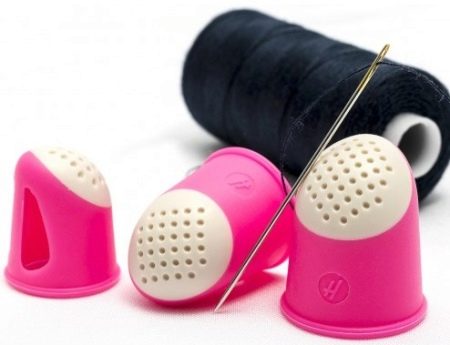
- Thimble, the base of which prevents it from rotating on the finger... The product has a metal tip with a grooved pattern. The base of the product is made of soft rubber.
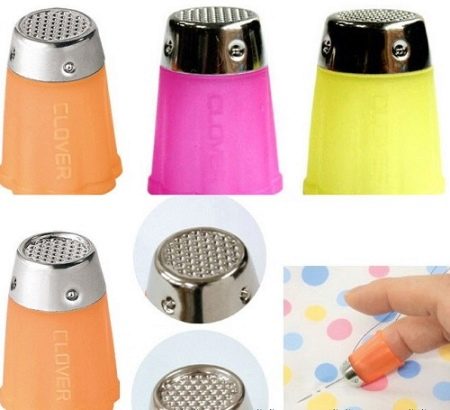
- Bottomless accessory. It looks like a familiar thimble, the main difference is that the tip of the finger is practically unprotected in it. Such a beautiful accessory is perfect for working with very thick fabrics, for embroidery or neat overcasting of fabric.
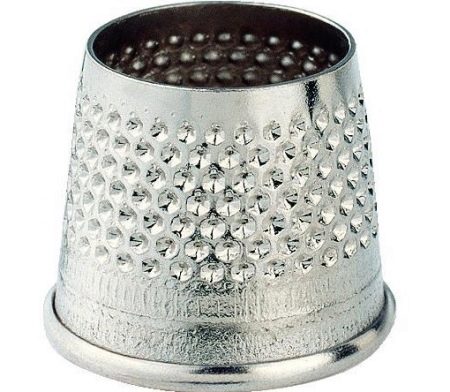
- In the form of a ring... This adjustable model will allow, if necessary, to change the parameters of the product, depending on the specific size of the finger. This thimble has no bottom, which is reflected in its name. But there is a kind of strap - you can tighten it on the protected finger. It is most often purchased by those needlewomen who need protection for several fingers at once (sizes can be easily adjusted for the index finger or little finger in a few seconds).
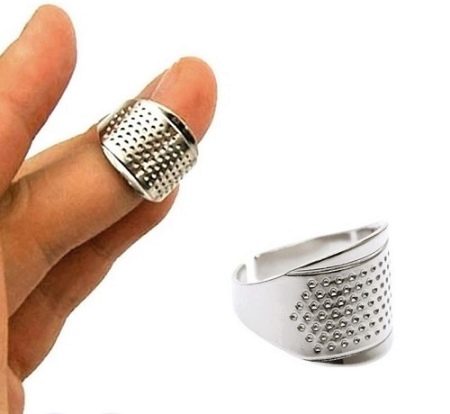
Manufacturing materials
Thimbles are available in different materials. Most often, ordinary people come across an ordinary metal thimble. In addition, these days, in order to save money, the accessory is made of plastic, silicone, or materials are combined with each other. Leather products are in great demand for hand-made embroidery, as they have increased flexibility. Over time, they begin to take the shape of the owner's finger, which makes them even more convenient devices.
At the royal courts, in due time, mainly gold, as well as silver, porcelain and bronze items were popular. Over time, needlewomen began to apply stylish patterns and luxurious ornaments to these beauty accessories.
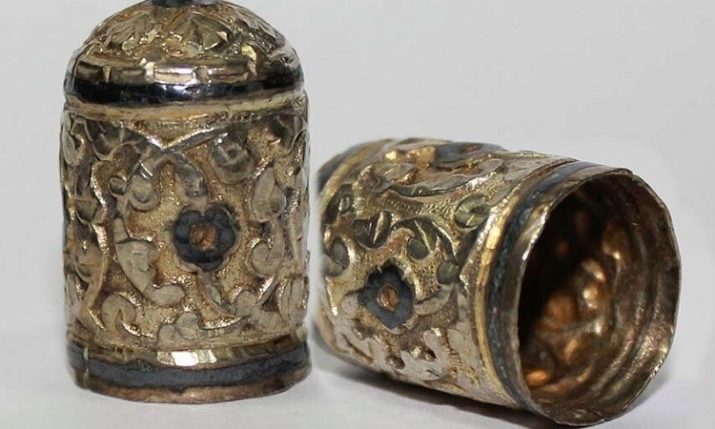
The main advantage of a rubber product over the rest is its very tight fit to the fingers, it is for this reason that it is much more convenient to work in such a thimble.... If necessary, you can even put on 2 accessories at once for 1 finger, or use them on different fingers. Rubber products will prevent the needle from slipping when sewing. They even have separate air vents.
The silicone thimble will provide excellent needle support when sewing very heavy fabrics and when sewing more than 2 layers of fabrics. The product is convenient because of the small holes and a separate slot for the master's marigold.
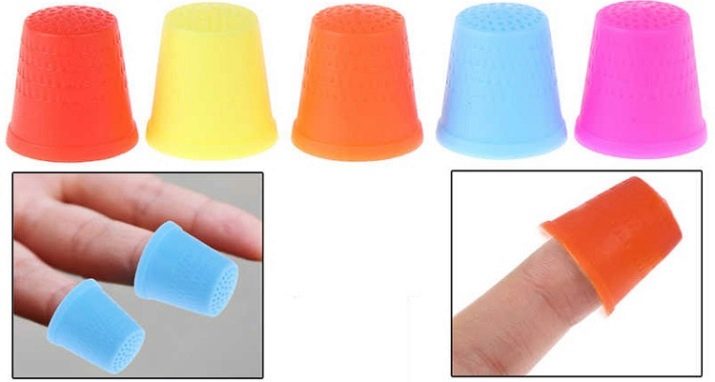
Nuances of choice
The thimble is most often purchased to protect the middle finger. However, many craftsmen prefer to use the product on their index finger, and sometimes on their largest. In addition, you can use 2 thimbles at once on one hand. The size of the fingers will also directly affect the selection of an accessory, since the fingers of not all masters will be the same size. When choosing, you will have to try to choose the right size from among several products at once, before finding the one that suits you best.
If you prefer to protect your thumb, you should purchase the accessory that was released for it. If you have thin or very small fingers, then it is better for you to choose products with the ability to adjust the width, so that you can adjust the product to your parameters.
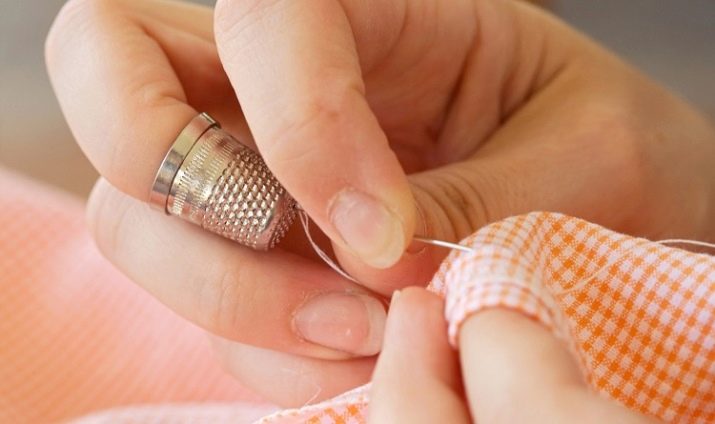
How to use it correctly?
The basic rule of using this accessory is that it fits snugly on your finger, otherwise it will be very inconvenient for you to work. At the same time, the thimble should not slide off the fingers, and it should not create strong pressure on the finger either. When working, the thimble must be put on the finger in advance. After you have pierced the fabric with a needle, it must be carefully pushed forward using the selected thimble.
In order for the tool not to slip in your hands, the eye of the needle should rest against your thimble all the time. You should not press too hard on the needle with the product - many needles will break in this case.
And you should also be very careful when using the thimble, especially if you are using it for the first time - be careful not to let the thimble fall off your finger while pressing on the needle.
